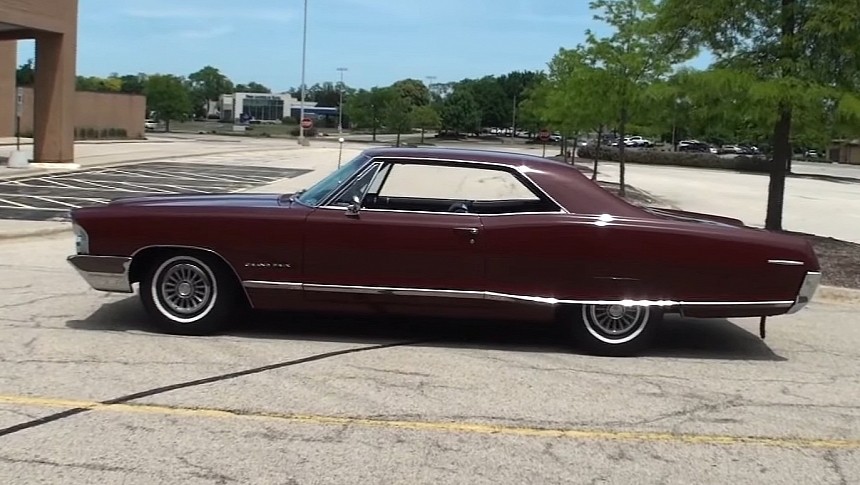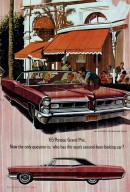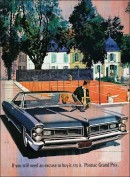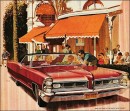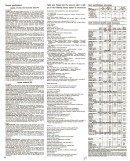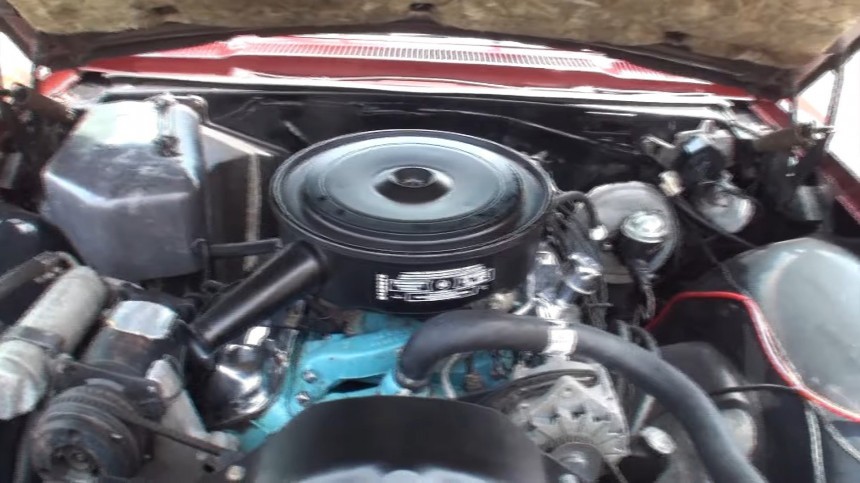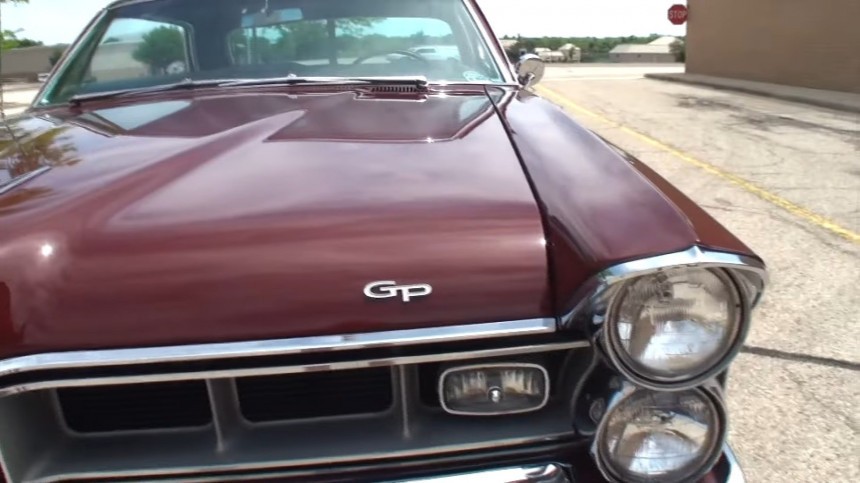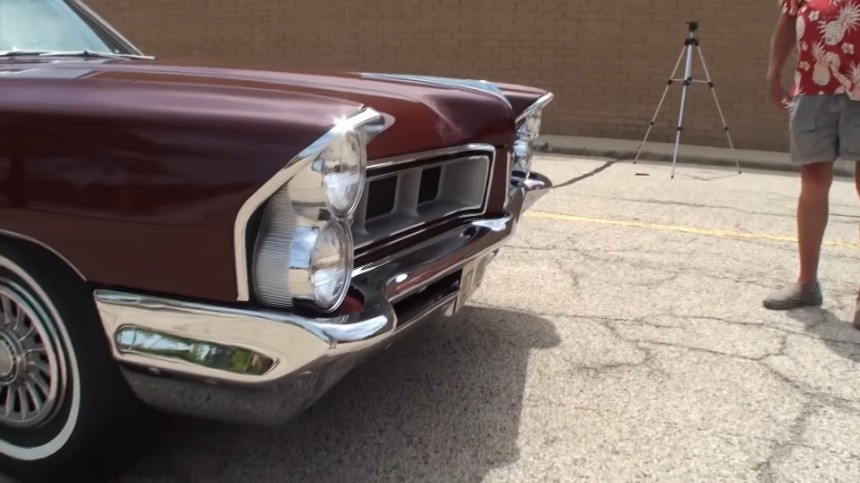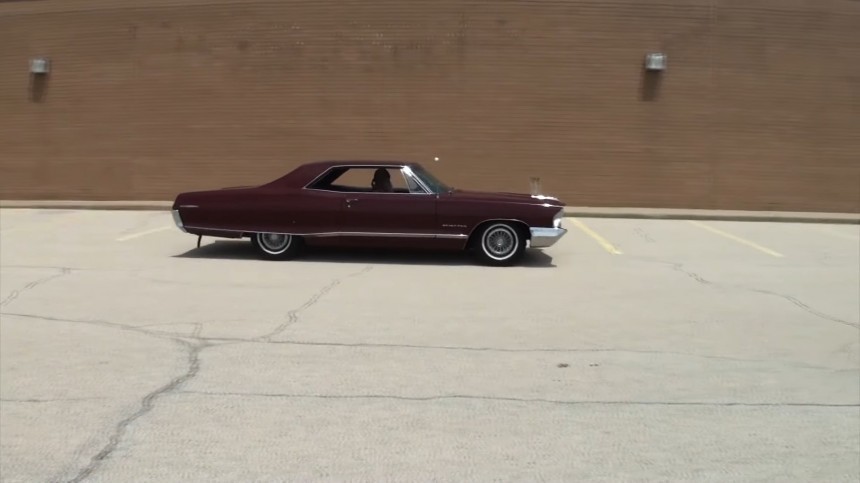1965 was Pontiac’s fantastic year of the sixties: the General Motors division broke the ‘10 million cars’ production mark in April of that year. It got the Motor Trend Car of the Year award for the entire line-up and passed the 800,000 units threshold in sales—quite the achievements, whichever way one would prefer to look at it.
Also, that year marked the launch of the second-generation Grand Prix, the grand touring luxury car with a list of standard equipment a mile long. Naturally, the looks had a matched performance pairing, with the revised four-barrel 389 cubic-inch (6.4-liter) V8 producing a healthy 325 hp (330 PS) and 429 lb-ft (582 Nm).
And that was for the three-speed automatic (the new Turbo-Hydramatic with the revised PRNDSL quadrant). The manuals (either a three-speed, standard equipment or the brawny four-speed) had it even better, with the same powerhouse producing 333 hp (338 PS).
The Grand Prix held back a bit in the rear gearing sector – a 3.08:1 was the standard offer. Still, options were generous, especially if the engines got bigger. In 1965, Pontiac’s bigger V8 meant the 421-cube V8 (6.9-liter), which came in two variants and three states of tune. A single four-barrel carburetor or two choices of Tri-Power. Triple two-throat carbs were a temptation in the 356-hp/361 version or the High Output 421 HO with 376 horses available (381 PS).
And there was one option that was available at no extra cost and rarely chosen by customers – the Plum interior. Pontiac had a palette of matching interior hues for their automobile liveries. Plum couldn’t just be ordered on any car.
Only the Grand Prix and the Bonneville were allowed to offer customers the shade of dark violet. Still, the latter only had two possible combinations: Starlight Black or Iris Mist. See the gallery for a more in-depth look at how Pontiac chose to color-key its cars in ’65.
The Grand Prix could pair the plum with several more body colors, but few customers chose it. One of those seldomly-seen examples left the factory in Pontiac, Michigan, in the last days of July 1965 and stayed with the same family for almost four decades.
You can admire it in the gallery – it retains its original equipment and boy! Does it look stunning or what? The engine, transmission, and rear end are the same from 58 years ago, and the interior looks as if ‘ 65 was three weeks ago.
Interestingly, the original owners who enjoyed this splendid example of Pontiac engineering, styling, and carmaking weren’t avid to put it on the road much. An average of 798 miles per year between 1965 and 2004 is little more than Sunday church trips and occasional rides to the local country club. The car now has a dowry of just under 45k miles (72,400 km), and it only ran through a set of tires since new.
The present owner had to remove the original rubbers because of age wear-down. Then again, tires are consumables, so they don’t count in the originality of a survivor that didn’t spend their life under a tarp in a climate-controlled garage.
The Grand Prix nameplate was on a rolling barrel going downhill as far as sales went, having continuously lost momentum since 1963. The trend would go for the entire second generation four-year span when sales slowly decreased.
Nearly 58,000 units were made during the 1965 model year production run. Pontiac went through an emotional rollercoaster for the entire next decade, with sales going up and down without any particular predictable reason or pattern.
However, one of the ’65 left a unique and lasting memory to a 16-year-old kid with a Grand Prix as his first car. The car and its owner parted ways four years later, but the feeling was forever carved in the man’s heart. By raise of hand, how many of you can relate to this experience of falling in love with your first car and never letting go of the wish to get it back?
After decades of driving other makes and models, the gentleman in the video found his first piston love and bought it without hesitation. I’d like to see the man that, forty years from now, will be looking incessantly for the EV tablet-on-wheels of his youth from the 2020s… (but I’m not telling how exactly I’d like to see him).
The Pontiac Grand Prix faced severe internal competition in the mid-and late-sixties: the GTO was a much more attractive alternative for buyers. The Firebird introduction in 1967 didn’t help much, with the full-sized luxury cars being slowly pushed aside by the new automotive sensation segment, the pony car.
Still, Pontiac honored its nameplate and didn’t ax it, turning a blind eye to slumping sales figures from the less successful years and retaining the moniker until 2008, just one year before the Division ceased to exist altogether. During its 46-year history, the Grand Prix moved around 4.2 million units, averaging over 90,000 cars for a production year. It hit a high water mark in 1977, with some 288,000 GPs leaving the assembly lines.
And that was for the three-speed automatic (the new Turbo-Hydramatic with the revised PRNDSL quadrant). The manuals (either a three-speed, standard equipment or the brawny four-speed) had it even better, with the same powerhouse producing 333 hp (338 PS).
The Grand Prix held back a bit in the rear gearing sector – a 3.08:1 was the standard offer. Still, options were generous, especially if the engines got bigger. In 1965, Pontiac’s bigger V8 meant the 421-cube V8 (6.9-liter), which came in two variants and three states of tune. A single four-barrel carburetor or two choices of Tri-Power. Triple two-throat carbs were a temptation in the 356-hp/361 version or the High Output 421 HO with 376 horses available (381 PS).
Only the Grand Prix and the Bonneville were allowed to offer customers the shade of dark violet. Still, the latter only had two possible combinations: Starlight Black or Iris Mist. See the gallery for a more in-depth look at how Pontiac chose to color-key its cars in ’65.
The Grand Prix could pair the plum with several more body colors, but few customers chose it. One of those seldomly-seen examples left the factory in Pontiac, Michigan, in the last days of July 1965 and stayed with the same family for almost four decades.
Interestingly, the original owners who enjoyed this splendid example of Pontiac engineering, styling, and carmaking weren’t avid to put it on the road much. An average of 798 miles per year between 1965 and 2004 is little more than Sunday church trips and occasional rides to the local country club. The car now has a dowry of just under 45k miles (72,400 km), and it only ran through a set of tires since new.
The present owner had to remove the original rubbers because of age wear-down. Then again, tires are consumables, so they don’t count in the originality of a survivor that didn’t spend their life under a tarp in a climate-controlled garage.
Nearly 58,000 units were made during the 1965 model year production run. Pontiac went through an emotional rollercoaster for the entire next decade, with sales going up and down without any particular predictable reason or pattern.
However, one of the ’65 left a unique and lasting memory to a 16-year-old kid with a Grand Prix as his first car. The car and its owner parted ways four years later, but the feeling was forever carved in the man’s heart. By raise of hand, how many of you can relate to this experience of falling in love with your first car and never letting go of the wish to get it back?
The Pontiac Grand Prix faced severe internal competition in the mid-and late-sixties: the GTO was a much more attractive alternative for buyers. The Firebird introduction in 1967 didn’t help much, with the full-sized luxury cars being slowly pushed aside by the new automotive sensation segment, the pony car.
Still, Pontiac honored its nameplate and didn’t ax it, turning a blind eye to slumping sales figures from the less successful years and retaining the moniker until 2008, just one year before the Division ceased to exist altogether. During its 46-year history, the Grand Prix moved around 4.2 million units, averaging over 90,000 cars for a production year. It hit a high water mark in 1977, with some 288,000 GPs leaving the assembly lines.
